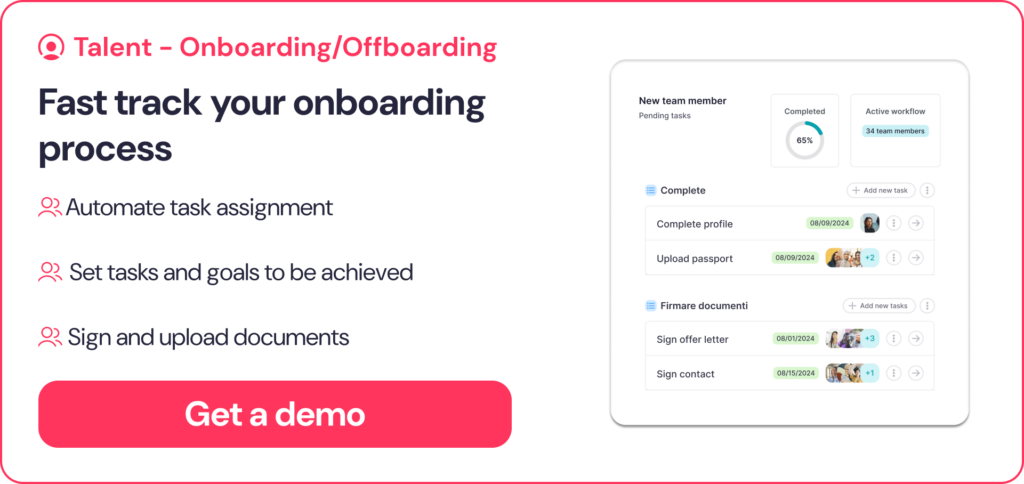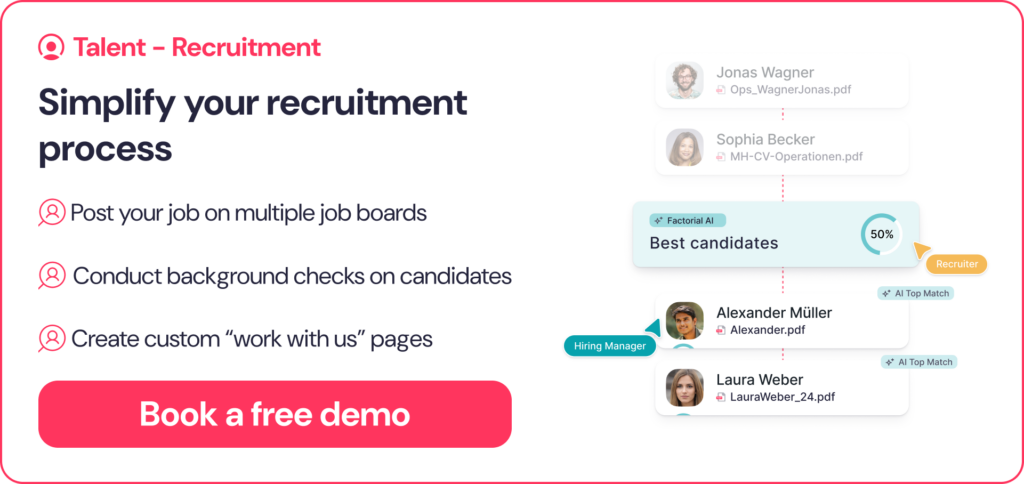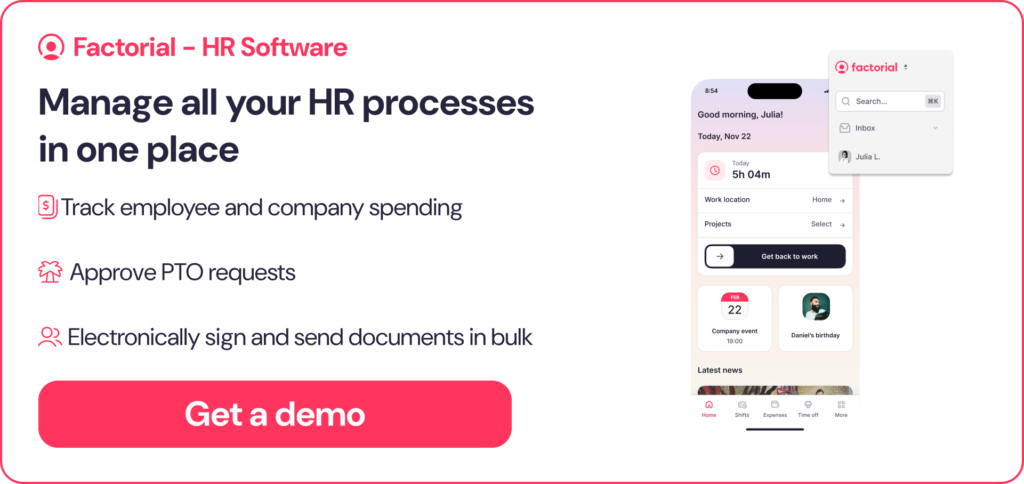As an HR professional, part of your job is understanding the employee life cycle and how it impacts overall performance, engagement, and retention levels in your company. The effective management of all life cycle stages is considered a crucial function because it deals with the most valuable asset of your organisation: people. In fact, according to a recent report, employee life cycle management and the overall employee experience is one of the biggest trends in business this year.
In this post, we will take a look at the employee life cycle model so that you can help your employees reach their full potential. We will explain what it is and share some useful tips to help you through each of the cycle stages.
- What’s an Employee Life Cycle?
- What are the Stages of the Employee Life Cycle?
- Why is the Employee Life Cycle Model Important?
- Tools for Every Stage of the Employee Life Cycle
- ✅ Employees Goals & OKR software
What's an Employee Life Cycle?
The employee life cycle (ELC) is an HR model that tracks the entire journey an employee takes at your organisation. It begins the moment a potential employee becomes aware of your brand and lasts until their final day working at your company. Aside from attraction and offboarding, the ELC also takes into account recruitment and onboarding, retention, career development, and the overall employee experience at every stage of their journey with you.
Once you understand how to engage with your employees at every phase of the employee life cycle, you’ll be able to attract and retain the right candidates and boost the overall performance of your company.
Related: Free onboarding checklist
Advantages of Implementing an Employee Life Cycle Strategy
By mapping out the employee journey in the same way you map out the customer experience, your company will see two main benefits:
- Better talent retention, and
- Reputation improvement. The ability to effectively allocate resources and efforts to reduce turnover issues reduces the time and money that turnover costs cause for the company. Similarly, a better reputation increases the chances of hiring more new talent, meaning a more committed and driven workforce.
What are the Stages of the Employee Life Cycle?
There are six stages to the employee life cycle and each play their own role within the ELC: Attraction, recruitment, onboarding, retention, development and separation. The HR employee lifecycle encompasses the key stages of an employee’s journey within an organization. They are broken down this way to help HR teams visualise and understand how employees engage with different professional organisations. Overall, the employee life cycle is a tool to help your company reach it’s maximum potential in performance and efficiency.
We’ll take a look at each stage and share a few tips to help you improve the overall employee experience at your company.
1. Attraction
This is the first stage of the employee life cycle, and it is when potential applicants are first exposed to your brand.
This is a vital stage of the model because it is when candidates will decide whether or not they appeal as potential employers. If you don’t make a good first impression, then you’ll be unlikely to attract the right talent to help you grow as a successful company.
The best way to improve this initial stage of the employee life cycle model is to focus on building your brand and reputation. Having a positive culture that prioritises employee development and innovation is sure to win your brand a great reputation.
2. Recruitment
The next stage of the employee life cycle is recruitment. This is when an employee passes from applicant to employee, and it is when most employees will form their first impression of you as an employer.
Here are a few tips to consider:
- Be specific about the skills and abilities you are looking for so that nobody wastes their time.
- Involve your existing employees. Encourage them to refer potential candidates and to share opinions on the skills new team members should possess. Ask managers to sit in on interviews.
- Offer attractive benefits and compensation to keep you competitive as an employer and help you attract top talent.
3. Employee Onboarding
Once you have recruited a new employee, the next stage in their life cycle is onboarding and orientation. The main focus of this stage is to help new employees understand and blend in with your corporate culture.
During this stage, make sure you share enough information so that new hires understand your goals, attitudes, and values as a company. You also want them to understand the role they will play in helping to build your organisation. This is an important stage of the employee cycle as this sets the tone for your new hire.
Whether you are in manufacturing or you sell products or services, here are a few onboarding best practices to help you get started:
- Make employees feel welcome and provide them with as much information as possible.
- Be as clear as possible about your expectations.
- Provide as much training as possible.
- Consider expanding into remote onboarding.
- Ask employees if they have any questions and address them.
- Conduct regular follow-ups to see how new employees are settling in and if they are integrating well with the team.
4. Retention
This is the 4th stage of the employee life cycle, and it is all about keeping employees happy.
The best way to do this is through a program for rewards and recognition. You also need to make sure you build a nurturing and supportive culture to promote employee satisfaction and engagement.
- Focus on building relationships with your employees.
- Foster a culture of respect and transparency.
- Promote open lines of communication amongst all team members.
- Seek out employee feedback and measure team morale frequently.
- Understand what motivates each of your employees.
5. Employee Development
During this stage, you want to help your employees develop their skills so that they get better in their roles. You also want them to feel they have a clear career path so that they are not tempted to seek employment elsewhere.
- Meet with employees regularly to discuss their goals.
- Encourage professional development in all your teams.
- Assess the knowledge and skills of all your employees.
- Provide regular training opportunities.
- Encourage external learning and reward employees who learn in their own time.
- Get your managers to work with employees directly to help them prioritise the areas that require further development.
- Encourage your team members to be responsible for their own development.
6. Life Cycle: Separation
The final stage of the employee life cycle is separation, also known as the offboarding stage. This is what happens when an employee leaves your company. This might be due to retirement, new employment, or personal reasons. It also includes employees who you lay off.
Whatever the reason for leaving, it’s important to provide a positive experience at this final stage. Aside from anything else, when a team member leaves, it has an effect on your other employees.
- Try to ensure there is as little disruption for other employees as possible.
- If an employee resigns, talk to them to help you understand why they are leaving. This will help you address any potential problem areas in your company.
- If you fire an employee, make sure you do it the right way.
- Ask for open and honest feedback from departing employees. The best time to do this is during their exit interview.
Why is the Employee Life Cycle Model Important?
The employee life cycle model is important for a number of reasons. The biggest benefit is that it encourages you to evaluate and improve the employee experience at each stage of the model. And the better the experience an employee has with your company, the more likely they are to continue working for you. This boosts your retention levels and has a drastic impact on turnover and associated costs.
Once you understand the employee life cycle you can focus on improving the experience at each stage of an employee’s journey with you. You can also design learning and development strategies to encourage your employees to develop their skills and realise their full potential.
All the above also helps to improve your reputation as an employer. And this in turn helps you attract top talent so that you can build a committed and driven workforce.
Related video: The Ultimate Guide to Performance Management: In this video, we share essential tips on tracking employee performance.
Tools for Every Stage of the Employee Life Cycle
We’ve discussed the importance of monitoring each of the employee life cycle stages and the benefits doing so can bring you as a company. However, the best way to ensure you offer the best experience and encourage your employees to engage with your company is to use the right tools and software to support your ELC strategy.
The right software should support you at each stage of the employee life cycle model. Firstly, you need effective recruitment and onboarding software and an integrated employee portal. Secondly, you need tools to help you keep track of employee performance and support your L&D programs. Thirdly, you need tools for employee recognition, as this has a huge impact on building a positive, nurturing culture. Finally, you also need a platform to conduct employee surveys and appraisals so that you have access to honest and transparent feedback at each stage of the employee life cycle.
Factorial’s all-in-one solution supports you at each stage of the employee life cycle, including attracting, recruiting, engaging, retaining, and developing employees. Streamlining and automating all your HR processes with Factorial has a huge effect on improving employee satisfaction.
What’s more, by implementing Factorial’s people management software solution you also get the following benefits:
- Increased efficiency and productivity
- Improved visibility
- User-driven innovation and optimised performance
- Accuracy and regulatory compliance
- Improved reporting in real-time
- Centralised HR processes and secure data storage
What are you waiting for? Sign up now for free and start improving your HR management with Factorial!





